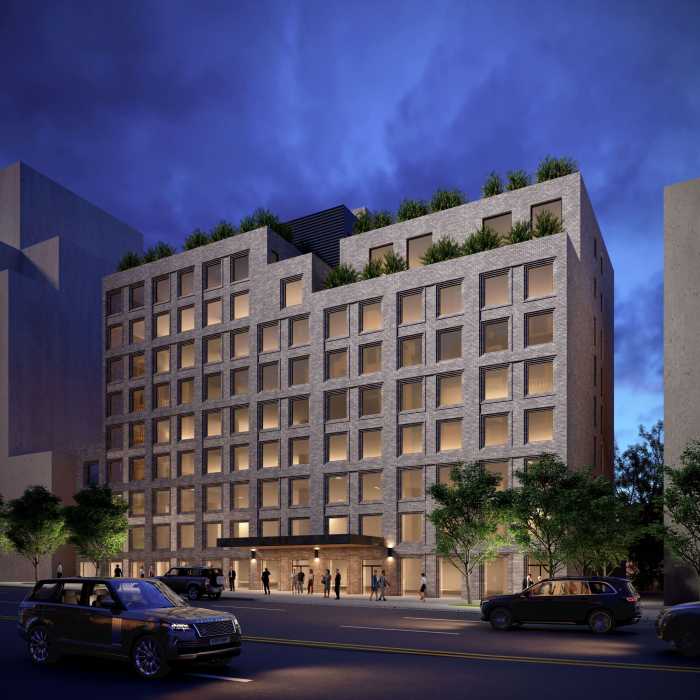It’s the rail deal.
Proponents of the mayor’s plan to build a $2.5-billion trolly line connecting Brooklyn and the outer borough of Queens unveiled on Monday a true-to-size model of the system’s streetcars in front of a crowd of city officials and other local leaders at the Brooklyn Navy Yard. The reveal offered the group a glimpse of the future if the 14-mile Brooklyn Queens Connector is approved, according to a main supporter of the transit initiative.
“Today we’re providing New Yorkers with their first real taste of what the BQX would look and feel like, and calling on the city to bring light-rail service to areas long underserved by reliable mass transit,” said Ya-Ting Liu, the executive director of advocacy group Friends of the Brooklyn Queens Connector.
Backers of the project showcased a 46-foot Citadis 405 car, which workers constructed in France before shipping it to Kings County. The vessel contained 23 seats for would-be straphangers in addition to padded rails that fatigued commuters can lean on, according to a New York Post report.
Mayor DeBlasio first announced the ambitious light-rail line — which would connect transit-starved nabes along the waterfront from Sunset Park to Queens and is still in its planning stages — last year.
Borough President Adams, who said he supported the Brooklyn Queens Connector in principle after Hizzoner proposed it, echoed that stance at the streetcar unveiling, noting how the service would bring public transportation to areas that need it most, but that sorting the plan’s finer points will be key to getting it off the ground.
“At my inauguration nearly four years ago, I laid out a vision for a new transportation link for Brooklyn’s waterfront, a line to connect historically underserved transit deserts. That vision is captured by the BQX proposal,” the beep said. “To be sure, there are key details that need resolution before this project can advance. I am confident that the city can work productively in a community-led process on issues such as route design, financing structure, and MTA fare integration.”
But some transportation experts blasted the idea following its announcement, claiming proponents market the trolley as a service for low-income residents in transit-starved nabes, but that it will actually benefit wealthy property owners along its proposed routes — which traverse Williamsburg, Fort Greene, Downtown, and Red Hook — and could require banning traffic on certain streets and building new bridges.
The pros also questioned the mayor’s claim that the tram will pay for itself via increased property taxes, arguing there would need to be a ton of new development in certain nabes in order for that to happen, and suggested the proposed funds for the project instead be invested in upgrading and expanding the city’s current transit system.
The Brooklyn Queens Connector proposal still faces a lengthy public-approval process. If it gets the green light, construction could begin in 2019 with service scheduled to start in 2024.


























